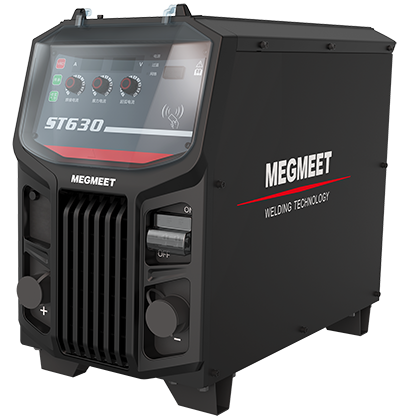In the realm of MMA "Stick" Welding, one critical factor that profoundly influences the welding process is Open Circuit Voltage (OCV). At its essence, OCV denotes the voltage level when no current is flowing through the welding machine during the non-welding state. Understanding OCV is pivotal for welders as it significantly impacts the quality, efficiency, and safety of welding operations.

I. Importance of Open Circuit Voltage
Maintaining an optimal OCV level is imperative as it directly correlates with arc stability, electrode selection, and overall welding performance. Welders must comprehend that variations in OCV can affect the weld pool size, penetration depth, and even the final bead appearance.
II. Factors Affecting OCV
When it comes to Open Circuit Voltage (OCV) in welding, several factors come into play, influencing this critical element of the welding process. These factors play a significant role in determining the OCV level and subsequently impact the quality and efficiency of welding operations:
Welding Machine Type: Different types of welding machines have varying OCV capabilities. The specifications and design of the machine can affect the OCV range available for use.
Electrode Material: The material composition of the electrode influences the OCV required for optimal welding. Different electrodes may demand specific OCV settings for effective performance.
Welding Environment: Environmental factors such as temperature, humidity, and altitude can affect OCV stability. Extreme conditions might necessitate adjustments to maintain the desired OCV level.
Power Source: The power supply feeding into the welding machine can impact OCV. Variations in power sources may result in fluctuations in the voltage levels.
Electrode Diameter and Type: The size and type of electrode being used can impact the required OCV. Different electrodes might need different OCV settings for efficient welding.
III. Impact on the Welding Process
OCV holds a significant impact on the welding process, influencing various aspects of the welding operation:
Arc Initiation: OCV sets the stage for initiating the welding arc. It represents the voltage level when no current flows, and upon striking the arc, the OCV transforms into a welding voltage that sustains the arc.
Arc Stability: Maintaining an optimal OCV is crucial for arc stability. An appropriate OCV ensures a consistent and steady arc, vital for achieving quality welds.
Penetration Depth: OCV plays a role in determining the depth of penetration into the base metal. Controlling OCV helps regulate the heat input, affecting how deeply the weld penetrates the material.
Bead Appearance: OCV influences the appearance of the weld bead. Proper OCV settings contribute to a well-defined bead shape, ensuring a visually appealing and structurally sound weld.
Weld Pool Size: Variations in OCV can impact the size of the weld pool. Optimal OCV settings contribute to controlling the size of the molten weld pool, influencing the overall welding outcome.
IV. Optimizing OCV for Superior Welds
Optimizing Open Circuit Voltage (OCV) is key to achieving superior welds. Here's how welders can fine-tune OCV for enhanced welding performance:
Understanding Electrode Requirements: Different electrodes demand specific OCV settings for optimal performance. Referencing the electrode manufacturer's recommendations helps in determining the ideal OCV range.
Material Thickness Consideration: Adjusting OCV based on the thickness of the material being welded is crucial. Thicker materials might require higher OCV settings for proper penetration and fusion.
Testing and Calibration: Conducting test welds while adjusting OCV allows welders to assess the impact on arc stability, penetration, and bead appearance. Calibrating settings based on these trials ensures optimal results.
Monitoring and Fine-Tuning: Continuously monitoring the welding process and making slight OCV adjustments as needed during the welding operation ensures consistent performance.
Adhering to Safety Measures: While optimizing OCV, always prioritize safety protocols. Ensure proper training, use appropriate safety gear, and follow established safety guidelines to prevent hazards.
V. Conclusion
In the realm of MMA "Stick" Welding, Open Circuit Voltage emerges as a pivotal element shaping welding outcomes. Mastering OCV empowers welders to wield greater control over the welding process, ensuring precision, efficiency, and safety.
Related articles:
1. 10 MMA Welding Processes Flaws And Megmeet’s Solutions
2. How To Weld Stainless Steel – MIG, TIG and MMA Welding
3. MIG/MAG, MMA, TIG Welding: Choosing the Right Technique
4. MMA Welding or SMAW Welding: What You Need to Know?
5. How to Improve Your Stick Welding Technique?




